DEEPFAKES AND INTERMEDIA MELANCHOLY IN CREATIVE PROCESS
konrad zduniak
Source: artist’s private gallery
He carefully observes web space, from which he gets inspiration for his artistic activity. With deep reflection, he can look at algorithmic distortions; find enormous potential and dangers in the use of generated digital entities in art and the creative industry. He is interested in creating immersion in the meetings with recipients in real space, exploring art together in a homelike atmosphere. He searches for non-obvious ways of displaying his works.
His works are full of peace and melancholy. He could write a coursebook on how to smoothly transit from one field of art to another in his creative self-development process. He takes care of his mental health and builds healthy boundaries resisting pressure of ‘creative productivity’. Starting with creating images, videos and video installations, he then began to explore the potential of his own body – singing, writing, creating emotional images based on his own experience and memory. Konrad Zduniak tells us about his creative process and how grassroots activities in Warsaw influenced his growth.
In the English version we present selected and most interesting quotes from the interview.
PANDEMIC PROJECT WITH AI – GENERATING PORTRAITS OF NON-EXISTENT PEOPLE AND ALGORITHMIC CORRECTION
“Babe, You Don’t Exist”, series of portraits generated via thispersondoesnotexist.com, K. Zduniak, source: artist’s private gallery
During the pandemic, I became involved in the project ‘Baby, You Don’t Exist’ in which I create portraits with the help of artificial intelligence. I started doing that every day as an artistic exercise. Even if I would rather describe myself as an intermedia artist, a musician (though I associate the latter with someone who is educated in this field, and I learned everything by myself), in this particular project, I feel more like a curator…
This project is not related to music. It is based on a virtual generator that creates portraits of non-existent people using the sub-field of artificial intelligence – GANs (generative adversarial networks) algorithm. At the very beginning, I found out about the webpage thispersondoesnotexist.com while watching The Ellen DeGeneres Show. Creator of the page, an IT specialist, Phillip Wang, wanted to educate and sensitize users to what is happening on the web. He wanted to show what dangers we might face in the era of digitalisation: deepfakes, fake people and characters navigating the web.
The project we are working on together with AI is based on drawing random portraits. There are many glitches – some of the images are far from perfect so we cannot identify them as human faces. In the initial stage of work this project was similar to another one called ‘Zazdrość’ (‘Jealousy’), in which I copied or multiplied already created concepts, artworks or ideas and interpreted artistic issues chosen by me. Without knowing where I will get with ‘Baby, You Don’t Exist’ I was wondering what it looks like and what artworks of Polish artists I could associate them with. I thought about Aneta Grzeszykowska, who made a series of 18 photos generated in a graphic program in 2005. She was referring to Thomas Ruff’s famous works.
In my project, I do not only question the dark side of algorithmic correction of photos on covers, products and generally in the industry, but I question the impact of these actions as well. The algorithm uses photos uploaded online. It is interesting that among generated pictures there are no portraits of elderly people. It makes you wonder what kind of photos are posted on the web and what algorithmic image of the society we created on that basis. I started to wonder about where artistic creation starts and when it ends as well. Who am I at all: am I a photographer or an overseer? I do not use a camera, I do not have photographic film or anything else. AI is my photographic film and the refresh button works like a snapshot… that is the reason why I think I am a curator.
… I wonder what digital footprint civilization leaves on the Internet. How many of us are in the public space and how many of us are in this digital space.
ANALOGUE CLOSENESS AND LEAVING THE SCREEN BEHIND TO PARTICIPATE IN IMMERSION EXPERIENCE
During the pandemic and lockdown, I decided to come back to an analogue version of art and to exhibit my works at galleries. I thought that I am posting too much online, and viewers cannot fully immerse in what I am presenting. Even when looking at portraits or listening to music, I want people to immerse themselves completely in it. I plan to do concerts in apartments. Introducing viewers to space, feeling the physicality of an action, where a person can simply fully participate in experience – this is what defines artworks in my publication Cheerful Resign. Together with my friend Aga Gójska, an artist herself, we want to organize events, which would capture people’s attention and engage them, even if they cannot make changes in the artwork.
I surprised myself when I started to make portraits together with artificial intelligence, because for me art was always something analogous. I avoid the intensive use of technology, even though it is quite fascinating and I have many concepts how I could use it as well. However, displaying art in space is much more important for me. I am saying that from the viewer’s point of view, because I think about how I would want the viewer to comprehend my works.
Bring Your Own Beamer Warsaw, K. Zduniak, source: Vimeo
MEETING SPACE IN BYOB AND SHARE.WARSAW GRASSROOTS ACTIVITY
Audio-visual jam Share.Warsaw. Back then, I needed this kind of cool and safe space to show my works, and above all, to exchange ideas, show different skills, and meet new people. It was possible to try working with tools that were impossible to get, e.g. for financial reasons. A valuable and motivating experience.
Feeling of belonging to the artistic and creative community was resonating with me at those meetings. Exchanging experience, feedback and artistic tips shared by the public. Testing previously unavailable tools. I remember new eye-opening things presented there. Fascinating combinations of images, capability of ready-made effects to interpenetrate visual layers. Moreover, discovering mapping.
LISTEN TO SENSOR PODCAST
Broaden your perception. Hear about how technologies are changing art, culture, society, politics and marketing. The first series of interviews presents artists of the new media. You will find on Spotify part of the interview unpublished on the website.

See also...
Roch Forowicz

Jakub Wróblewski

Antonina Nowacka
Bogusia Nowacka


Ⓒ Copyright 2022 Sensor
Website proudly created by Karolina Jaworska
Used font: Roboto
Project by Weronika M. Lewandowska under an art scholarship of the Capital City of Warsaw
